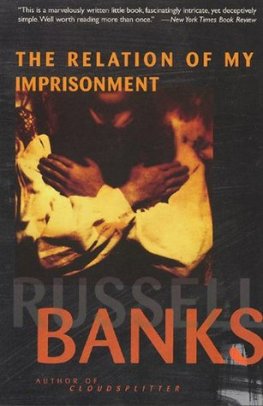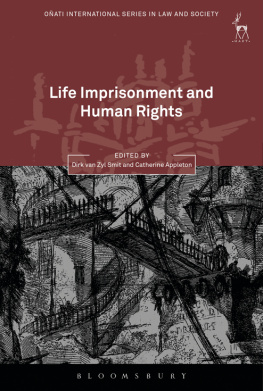First published by Willan Publishing 2004
This edition published by Routledge 2012
2 Park Square, Milton Park, Abingdon, Oxon OX14 4RN
711 Third Avenue, New York, NY 10017
Routledge is an imprint of the Taylor & Francis Group, an informa business
2004 The authors
The right of the authors to be identified as authors of this Work has been asserted by them in accordance with the Copyright, Designs and Patents Act of 1988.
All rights reserved; no part of this publication may be reproduced, stored in a retrieval; system, or transmitted in any form or by any means, electronic, mechanical, photocopying. recording or otherwise without the prior written permission of the Publishers or a licence permitting copying in the UK issued by the Copyright Licensing Agency Ltd, 90 Tottenham Court Road, London W1P 9HE.
ISBN 978-1-84392-069-4 (paperback)
ISBN 978-1-84392-070-0 (hardback)
British Library Cataloguing-in-Publication Data
A catalogue record for this book is available from the British Library.
Project management by Deer Park Productions, Tavistock, Devon
Typeset by GCS, Leighton Buzzard, Beds.
Introduction
I did not stir, I stood waiting in the middle of the cell, I listened, my ears were filled with the shutting of the cell door: I shall never forget it. I took another step and was up against the cell wall then I set about measuring the distance between the other two walls, I went back again to the middle of the cell, then to the left up to the wall this was the cell, they had assigned it to me, and I was busy taking possession of it, taking possession of it.
(Bienek 1950, in Davies 1990: 61)
Once you get into prison you have to become an automaton, ultimately, in order to survive. Have you ever read Lord of the Rings? In it theres something called the Land of Mordor, the Dark Lord. And theres a magic ring, and whoever has the magic ring on can vanish physically, but those who are in the domain of the Dark Lord, the Vaders, can see you. Thats what the prison system is. You actually have to obliterate your own self in order to preserve it. But they can see you.
(Claire, aged 37, England 1997, in Carlen 1998)
I thought how unpleasant it is to be locked out; and I thought how it is worse perhaps to be locked in.
(Virginia Woolf 1929)
Relatively few women commit crime. Even fewer go to prison. Why, then, a separate text on womens imprisonment? Three main reasons: first, because the rapid increases in womens prison populations which have occurred in England and Wales and jurisdictions around the world from the beginning of the 1990s have occasioned an acceleration of interest in womens crimes and the social control of women; second, because research indicates that womens experience of the criminal courts, as well as of imprisonment itself, is very different to mens; and third, because an understanding of womens imprisonment can significantly inform understanding of prison issues in general and the historical and contemporary politics of gender and penal justice in particular.
What are womens prisons for? What are they like? Why are lone mothers, ethnic minority and very poor women disproportionately represented in womens prison populations? Should babies be sent to prison with their mothers? Why have recent attempts to reduce the numbers of women in custody repeatedly failed? Can knowledge of womens imprisonment be better informed by the various theories, research studies, philosophies of punishment and cultural analyses which demonstrate the decisive impact on penal affairs of economic and political change? Do feminists have anything important to say on these issues? Who cares?
This introductory text has been written to guide students of penology lay, undergraduate and postgraduate carefully through the main historical and contemporary discourses on womens imprisonment. Each chapter, with its clear themes, concepts to know, recommendations for further reading, topics for discussion and essay questions, has also been designed to help students prepare confidently for seminars, course assignments, examinations and project work. The extensive and up-to-date References and Further reading section at the end, together with lists of the postal and web addresses of all the main statutory agencies and voluntary organisations with which the researcher on womens imprisonment will need to be familiar, is designed to relieve some of the burdens of busy undergraduate and postgraduate supervisors, while the topics for discussion likewise aim to provide immediate questions for debate in student discussion groups and seminars.
, the authors speak very directly to readers as they outline and discuss, on the basis of their own experiences over many years, some of the main practical and ethical issues likely to confront new researchers in the area.
We should at the outset declare the domain assumptions and values of the authors. Basically, we both believe that imprisonment should be used much less frequently as a punishment for lawbreaking and, given the types of crimes which women in prison have most frequently committed, we believe that a reduction in the womens prison population would be especially appropriate. However, we also believe that, while prisons exist, the more that can be understood about what goes on behind the walls, and why womens imprisonment takes the form it does, the more will be understood about social relationships and how they impact on state punishment.
Chapter 1
Histories of womens imprisonment
Introduction
There are as many histories of womens imprisonment as there have been women in prison and no single textbook can claim to do justice to any one of them. Yet even within the composite story of womens imprisonment in England which we choose to give in this chapter, there are glimpses of several different histories. To attempt an understanding of womens imprisonment as we know it today, therefore, we have to contemplate the ebb and flow of penal politics in ages past, and become familiar with the seemingly circular, but usually asymmetrical, movements of ever-changing and inter-related modes of state and penal governance both nationally and globally. Presentation of contemporary penalitys constitutive practices and ideologies such as prison medicine, prison administration, competing conceptions of welfare and risk, penology and discourses of womanhood and femininity is, furthermore, not made any easier by the constant evolution and transformation of the penal discourses within which those practices and ideologies are known. Instead of trying to depict a linear history of penal events and policies, the presentational techniques employed in this book will deliberately endeavour to picture the discontinuities, contradictions, fragmentation and transformations in womens imprisonment as they have been inscribed within state penality and popular consciousness. Let us therefore begin as we intend to go on, and start with the history of a major contradiction, one that has run through much penal discourse about women who break the law the contradictory notion that women criminals are both women and not women (see Worrall 1990).












